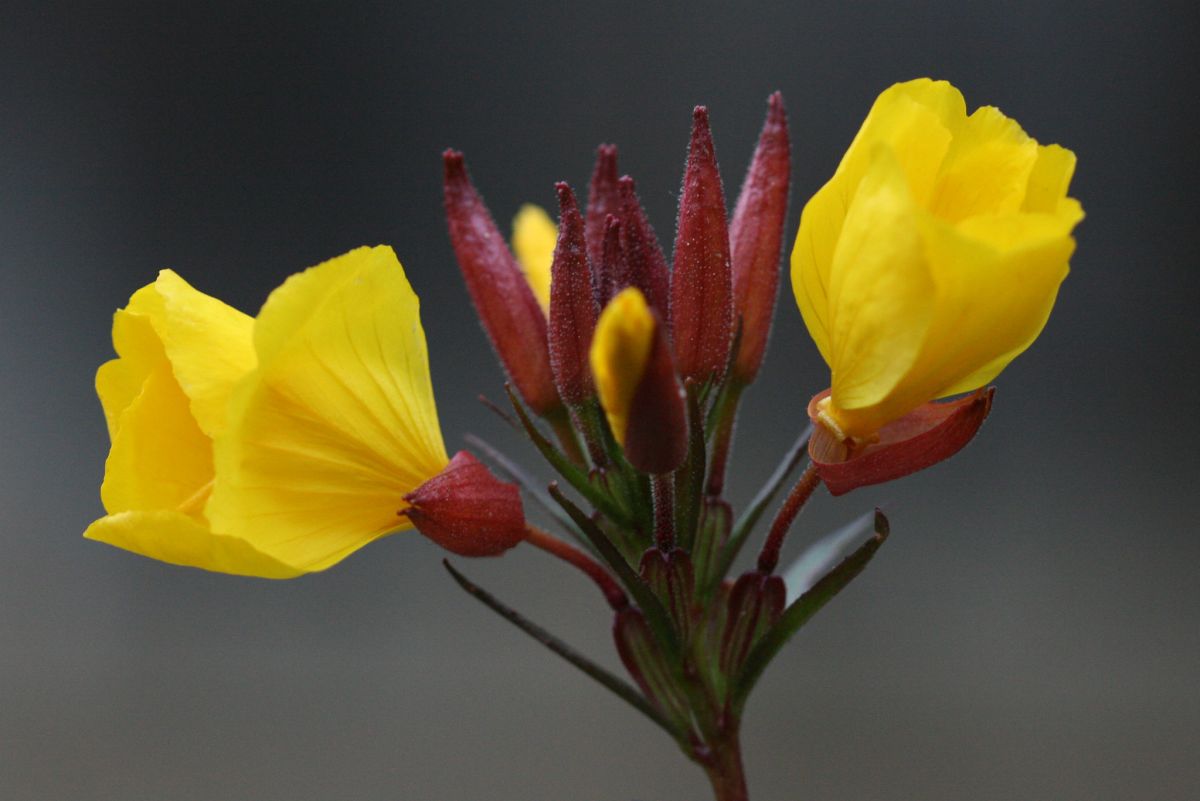There are about 125 species in the genus Oenothera, and they are commonly called sundrops, evening primroses, or golden eggs, and they are native to North and South America.
Blooms have just four petals and some are borne in clusters, and the flowers open either in the morning or the evening, depending on the species. The flowers fade fast but there are so many that they keep opening for a long period over the summer.
They like full sun and well-drained soil. Some species, such as O. speciosa, are invasive.
Many species have tap roots and resent being disturbed. You must divide those that can be separated in the spring or summer if they spread too much or lose their vigor. Take offsets from the side of a clump of you want to plant them elsewhere, and some species will also self sow.
Oenothera fruiticosa is a clump-forming, common sundrop, 1-3 feet tall with racemes of deep yellow flowers from late spring through summer.
‘Summer Solstice’ blooms a long time, too, and has maroon foliage in the fall.
‘Youngii’ has scarlet foliage in the fall in zones 4-8.
The "Ozark" sundrop, also known as the Missouri evening primrose, has single five-inch- wide yellow flowers from late spring right through to fall in zones5-8.
Oenothera speciosa spreads by runners and has single blooms in white or pink in zones 5-8 from early summer right through the fall.
This is Moya Andrews, and today we focused on evening primroses.
- Focus on Flowers
-
Indiana Public Media
- Indiana Public Media Home
- Radio
- TV
- News
- Arts & Culture
-
All Programs
- A Moment of Science
- Afterglow
- Community Minute
- Earth Eats
- Ether Game
- Flyover Culture
- Focus on Flowers
- The Friday Zone
- Harmonia
- Indiana Newsdesk
- Indiandroid
- Inner States
- Just You & Me
- Moment of Indiana History
- Night Lights Classic Jazz
- Noon Edition
- The Poets Weave
- PorchLight
- Profiles
- Classical Music
- Sylvia and Friends
- Soul Kitchen
- Journey Indiana
- Events
- Support
- Services
- Contact
- Broadcast Status
- Search


Give Now »








